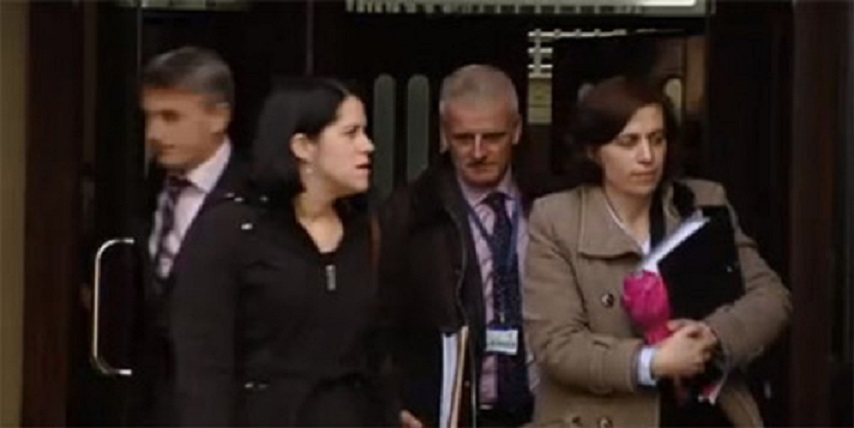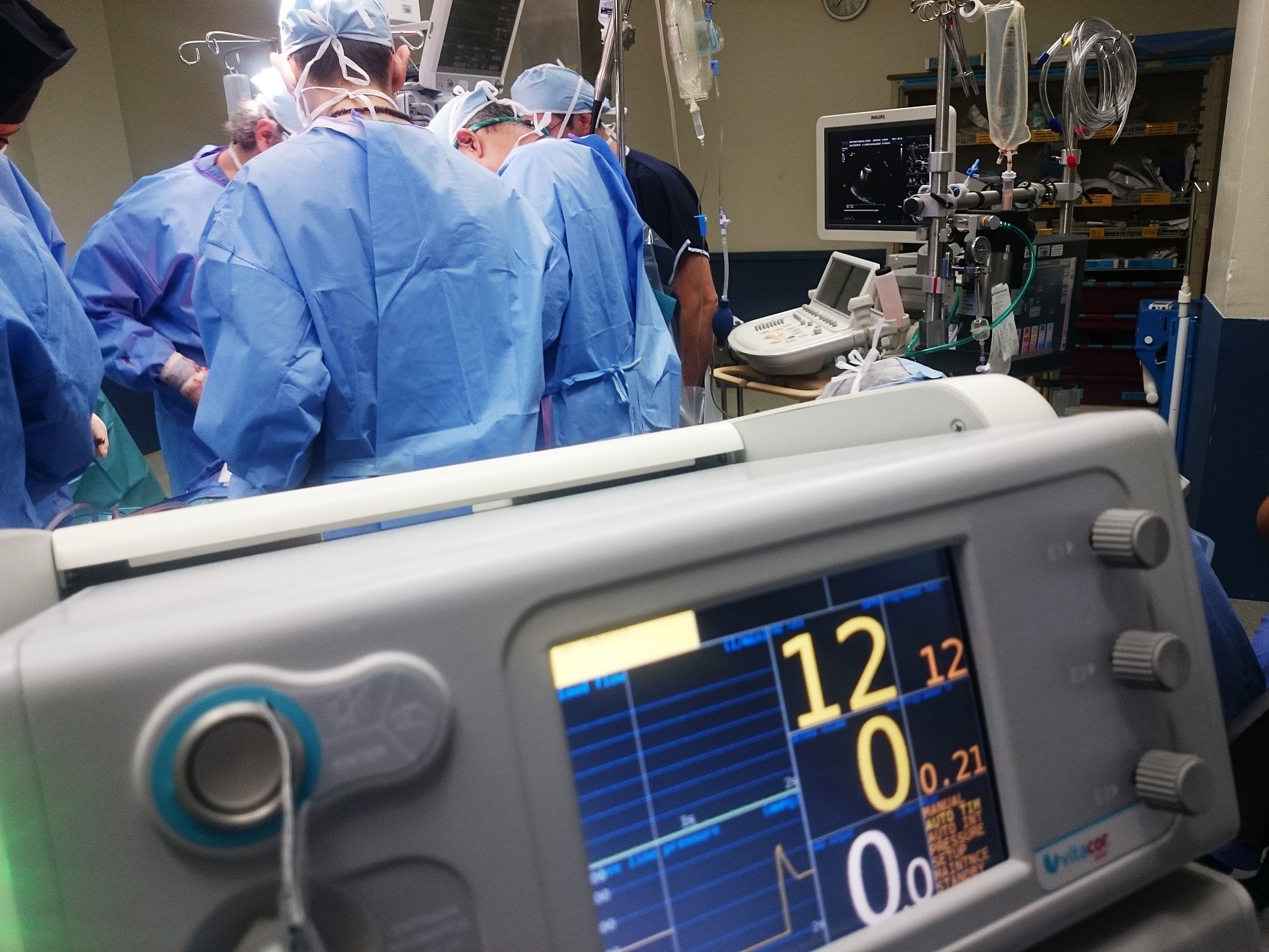Inquest to the Death of Savita
- Home
- Information
- The tragic death of Savita
- Inquest to the Death of Savita
October 2013: HIQA Report on Savita's Death
The inquest into Savita Halappanavar's death opened in Galway on 8 April 2013 and called numerous witness, mostly the staff who were involved in her care. It's now clear that the management of sepsis, not abortion, was the key factor in Savita's tragic death.
We extend our sympathies to Savita's family at this distressing time.

EXPERT:
Savita death caused by worst case of Sepsis seen in 30 years.
An expert at the inquest into the death of Savita Halappanavar said that she died from the worst case of sepsis he had ever seen in 30 years.
Drs Peter Kelehan and Grace Callagy said that the sepsis was caused by E.coli ESBL. That strain of E.coli is resistant to antibiotics and has a fatality rate of up to 60%.
Dr Kelehan told the inquest that he had seen less than 5 such cases of in his career - and that no patients had died.
TOP EXPERT: SAVITA DID NOT REQUIRE TERMINATION ON TUESDAY WHEN REQUEST MADE
Dr Susan Knowles, a consultant microbiologist with the National Maternity Hospital, has told the inquest that Savita Halappanavar's baby should have been induced on Wednesday, October 24, when she was iagnosed with chorioamnionitis, an infection of the membrane.
However, she said that delivery of the foetus was not warranted before chorioamnionitis was suspected on Wednesday. She added that it was her understanding that there was no substantial risk to Savita's life until then.
The inquest previously heard told that Dr Katerine Astbury had told Savita that she could not deliver the baby on Tuesday, October 23rd, because Savita was not physically ill, but "emotionally distressed".
Several failures in the hospital system meant that signs of an infection in Savita had been missed and sepsis developed rapidly on Wednesday October 24th, leading to the tragic death of Ms Halappanavar four days later.
The crucial issue here is that sepsis was missed because of several failures to follow up on and communicate test results. E.coli ESBL, however, also remains very resistant to antibiotics.
SAVITA HAD E.COLI INFECTION - RARE IN PREGNANCY AND HARD TO TREAT.
Dr Derbhile Keady, a consultant microbiologist, told the inquest that tests showed that Ms Halappanavar was infected with an E.Coli ESBL (extended spectrum beta lactamase), which is particularly difficult to treat with antibiotics.
Dr Keady said it was very unusual for maternity patients to suffer ESBL infections.
She went on to say that she had contacted four other maternity units around the country and discovered that, of results recorded over a four-year period, Savita's was the only blood culture to come back as ESBL e-coli.
DOCTOR SAYS THERE WERE SYSTEM FAILURES IN TREATMENT
Evidence given at the inquest revealed that the treatment of sepsis in pregnancy was the key factor in the tragic events that occurred in Galway University Hospital.
Dr Katherine Astbury has told the inquest that there were two major system failures:
Vital signs were not checked every 4 hours after membranes had ruptured, and the results of a blood test,
which indicated infection, had not been passed on.
OBSTETRICIAN WOULD HAVE DELIVERED BABY TO SAVE SAVITA'S LIFE
It is now also evident that the obstetrician treating Ms Halappanavar in Galway University Hospital was prepared to deliver Savita’s baby and end the pregnancy once septicaemia had been diagnosed. This is a crucial point as it clearly shows that Obstetricians in Ireland can, and do, intervene to end a pregnancy if there is a life-threatening complication.
Consultant obstetrician Dr Katherine Astbury told the inquest that the reason for checking the heartbeat of the unborn child was to ensure that Ms Halappanavar was not left "sitting around" with a dead foetus, as this could cause sepsis and infection.
She explained that Savita had made one request for a termination of pregnancy on Tuesday, because she was "emotionally distressed" at having to wait for the miscarriage to occur spontaneously. Savita was "not physically unwell" at the time Dr Astbury told the inquest.
However, once Dr Astbury realised that sepsis had set in and that Savita's life was in danger, she decided to carry out a termination - to deliver the baby - regardless of foetal heartbeat on Wednesday, October 24, 2012.
"I also informed Ms Halappanavar that if the source of the infection was not identified we would have no option but to consider termination regardless of foetal heartbeat," she said.
The inquest heard that on Wednesday, Dr Astbury approached a colleague, Dr Geraldine Gaffney, to discuss her view that they needed to go ahead with a termination regardless of foetal heartbeat. Dr Gaffney agreed and offered to write a note to be included in the medical records to this effect.

CRUCIAL INFORMATION NOT PASSED ON: INFECTION NOT SPOTTED
The core issue is that if Savita's infection had been diagnosed, her pregnancy would have been induced, and her baby delivered. Sadly, because information was not shared and acted on by the medical staff, the infection was not spotted until it had taken a serious grip, and by then Savita's life was in critical danger.
Results of a blood test, taken when Savita was admitted to hospital on Sunday, were not passed on. We now know that the blood test indicated an infection was present.
- On Tuesday, Savita had a raised temperature, but it is disputed whether a midwife passed that information onto the doctor treating her at that time.
- On Wednesday, a doctor noted a deterioration in Savita, including a discharge, and noted that on her chart. But a junior doctor seems not to have passed that information onto the senior consultant treating Savita. Unfortunately, the senior consultant did read the chart.
- Once the sepsis was diagnosed, a decision was made to induce labour and to end the pregnancy, but the infection had taken a serious hold and Savita deteriorated rapidly. Her unborn baby, a girl, spontaneously miscarried before induction could take place.
OBSTETRICIAN DENIES 'CATHOLIC' REMARK: MIDWIFE SAYS SHE MADE IT IN CHAT
Dr Katherine Astbury also unequivocally disputed all claims that she had refused to intervene in the pregnancy because 'this was a Catholic country'.
No witnesses were called who could corroborate accusations made against Dr Astbury on the issue.
The claim that she had relied on a Catholic ethos was first made in an interview on the Irish Times website, where it was alleged that Dr Astbury had made the comment in front of several witnesses, including junior doctors.
It has now emerged that it was a midwife in the hospital referred to Ireland being a Catholic country in conversation with Savita, but Anna Maria Burke told the inquest that, while she very much regretted the remark, it was said during a chat and had nothing to do with the provision of care.
"I'm upset about this and I'm very upset. I did mention a Catholic country, I didn't mention it in a hurtful context," she told the inquest.
Ms Burke said she was speaking with Savita about what would occur in India and the Hindu faith had been mentioned in the conversation. She was explaining why things were different in Ireland, she told the inquest.
Coroner Dr Ciaran McLoughlin, then pointed out that no public hospital in Ireland followed a religious persuasion or dogma. Ms Burke agreed.
E.COLI STRAIN RESISTANT TO ANTIBIOTICS
Evidence was given to the inquest that a blood test was taken when Savita was first admitted to the hospital on Sunday October 20th, but was not followed up on. What further compounded the tragedy was that an antibiotic-resistant strain of E.coli was the cause of the sepsis that led to Savita's death.
Staff midwife Miriam Dunleavy told the inquest she had “never seeing anyone get so sick so fast”, in relation to Savita's serious deterioration on Wednesday.
This was the first maternal death in NUI Galway Hospital in 17 years.
IRISH TIMES HAS QUESTIONS TO ANSWER
The Irish Times published a claim against a practising Obstetrician accusing her of allowing a Catholic ethos to interfere with medical treatment.
They continued to publish the claim, with little regard to Dr Astbury's integrity, despite the fact that the leaked HSE report revealed that the Obstetrician would have delivered the baby if it had been known that Savita's life was in danger.
Questions need to be put to the Irish Times, who have prompted a global attack on the reputation of Irish doctors by their reporting around Savita's tragic death.
INQUEST INTO THE DEATH OF SAVITA HALAPPANAVAR
Members of the national and international media have packed a small court room at Galway Courthouse for an inquest into the death of Savita Halappanavar, which occurred at University Hospital Galway last October.
Galway West Coroner Dr Ciaran McLoughlin, has sworn in a jury for the proceedings and explained to the court that the inquest would seek to:
- Identify the cause of death,
- Dispel any rumours or suspicions surrounding the case,
- Identify any factors that could lead to further deaths,
- Advance medical knowledge, and
- Provide clarification in the interests of the family.
Key Evidence - and disputes - from the first two days of evidence
1. THE DIAGNOSIS AND MANAGEMENT OF SEPSIS IS KEY TO THE CASE
A blood test was taken when Savita was first admitted to the hospital on Sunday, October 20th, but it appears that result was not followed up until the following Wednesday. That test showed a raised white blood cell count, which can be an indicator of infection.
Dr Ikechucwu Uzockwu, Senior House Officer at Galway University Hospital, first raised concerns about sepsis at about 7am on Wednesday October 24th.
It was put to Dr Uzockwu at the inquest that a statement from midwife Anne Maria Burke showed that Ms Halappanavar’s pulse was taken and found to be 110 beats per minute, and that he had been told this.
I was told the vital signs were stable, I was not told of an elevated pulse. There is no question that if I had known she had an elevated pulse, this lady had ruptured membranes,
I would have attended immediately.
He said in evidence that he had informed a senior specialist registrar, Dr Sarah Campbell, of his concerns, and that Dr Campbell told him she would come to Ms Halappanavar to review her, but that she did not do so.
The coroner, Dr McLoughlin, asked Dr Uzockwu if he had contacted the senior microbiologist in the hospital “as soon as possible”, since this was the procedure mandated in the hospital’s guidelines on managing sepsis. He said he had not informed the microbiologist.
Staff midwife Miriam Dunleavy told the inquest she had “never seeing anyone get so sick so fast”, in relation to Savita's serious deterioration on Wednesday.
What further compounded the tragedy was that an antibiotic-resistant strain of E.coli was the cause of the sepsis that led to Savita's death.
Microbiologists are expected to shed further light on the speed with which the infection sped through Savita's system.
2. DOCTORS WOULD HAVE DELIVERED BABY 'REGARDLESS OF THE FOETAL HEARTBEAT' IF DANGER TO MOTHER CONFIRMED
The inquest heard evidence from Dr Katherine Astbury who treated Savita throughout her pregnancy and subsequent miscarriage.
Dr Astbury told the inquest the question of a termination was discussed only once with Ms Halappanavar, on Tuesday, October 22nd.
According to Dr Astbury, Savita inquired about the possibility of giving her medication to cause her to miscarry as she did not want to have to await events.
“I recall informing Ms Halappanavar that the legal position did not permit me to terminate the pregnancy in her case at that time,” she said.
She denied that she had said she would go and check as to the legality of a termination, as she believed one was not warranted at the time.
At that stage it was not believed that Savita's life was in danger, because sepsis had not been diagnosed
Dr Astbury told the inquest that on Wednesday, October 23, she took the decision to go ahead with a termination of the pregnancy because she then believed there was a "real and substantial risk" to the life of Ms Halappanavar.
Dr Astbury's view had changed when she diagnosed sepsis had set in on Wednesday.
"I also informed Ms Halappanavar that if the source of the infection was not identified we would have no option but to consider termination regardless of foetal heartbeat," she said.
The inquest heard that on Wednesday, Dr Astbury approached a colleague, Dr Geraldine Gaffney, to discuss her view that they needed to go ahead with a termination regardless of foetal heartbeat. Dr Gaffney agreed and offered to write a note to be included in the medical records to this effect.

3. NUMBER OF TERMINATION REQUESTS DISPUTED BY DOCTOR AND STAFF
Praveen Halappanavar told the inquest that Savita had made three requests for a termination of pregnancy:
- On Monday morning, October 21st, to Dr Katherine Astbury, the consultant Obstetrician
- On the same day to a midwife at the hospital
- On Tuesday October 22nd to Dr Astbury
Praveen alleged that Dr Astbury said that the pregnancy could not be terminated, as Ireland was a Catholic country.
However, lawyers for the Health Service Executive have said that only one request for a termination was made.
The pointed out that Mr Halappanavar’s could not have been present at the time that Dr Astbury met with Savita on Tuesday, because he was bringing his wife’s parents to Dublin airport at the time.
The HSE lawyers also told the Coroner that an Indian medic, who Praveen said was in the hospital that Tuesday, will tell the inquest that he wasn't there on that day.
Mr Halappanavar then told the inquest he could be ‘confused’ over when requests were made for a termination of her pregnancy.
OTHER INCONSISTENCIES...
The senior doctor who treated Savita on the day she was admitted to Galway University Hospital has contradicted parts of the evidence given by her husband, Praveen.
Dr Andrew Gaolebale, a specialist registrar in obstetrics, informed Ms Halappanavar her pregnancy was no longer viable when he saw her last October 21st. She was 17 weeks pregnant but was diagnosed as miscarrying.
Dr Gaolebale told the inquest that he was not informed of the results of a blood test on Ms Halappanavar and he was not told that her membrane had ruptured after he saw her, even though he was still on duty for another 12 hours.
Praveen Halappanavar told the inquest that Dr Gaolebale told him his wife’s miscarriage would all be over in “a few hours” or in “four to five hours”.
However, Dr Gaolebale said he would not have made that remark as it was not possible to predict how long it would take a patient with Savita's symptoms to deliver the foetus. He felt it would happen within 24 hours.
Asked if he had told Ms Halappanavar there was “no going back” in relation to the baby, as alleged by her husband, he replied: “That was not my phrase.
Sources: Irish Independent, Galway Independent, Life House
LINKS
Information
- New must-read book
- Letters Unpublished
- Down Syndrome and Abortion the facts
- Joint Committee on Abortion
- Citizen's Assembly
- Planned Parenthood exposed as selling parts from aborted babies
- Clare Daly's Abortion Bill
- Pregnant? Need help?
- The tragic death of Savita
- 90% don't abort
- A 'fatal' abnormality
- Abortion for mental health
- Committee Hearings: 2013
- Expert Group: 2012
- CAHR: 2001-2007
- Government Reports: 1999-2000
- Medical Council
- Other Offical Reports
- Abortion: The Scientific Truth
- History of pro-life in Ireland and the push for abortion
- The Problem with Facebook's Factchecker
- VIDEO: 5 things they said would not happen
- New must-read book